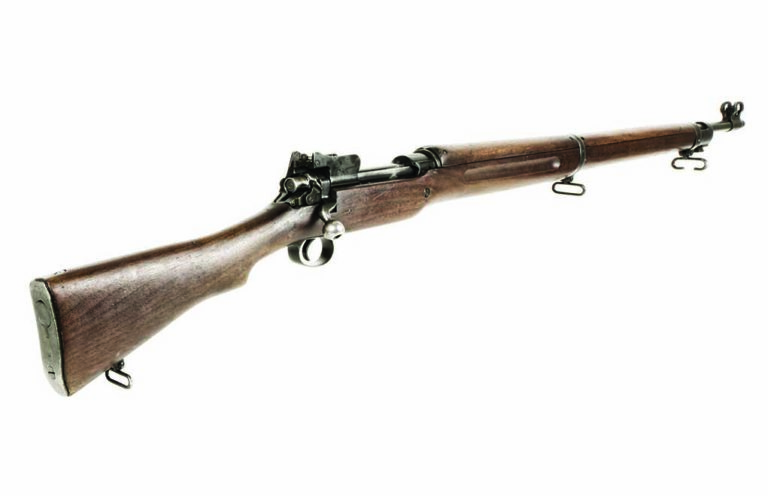
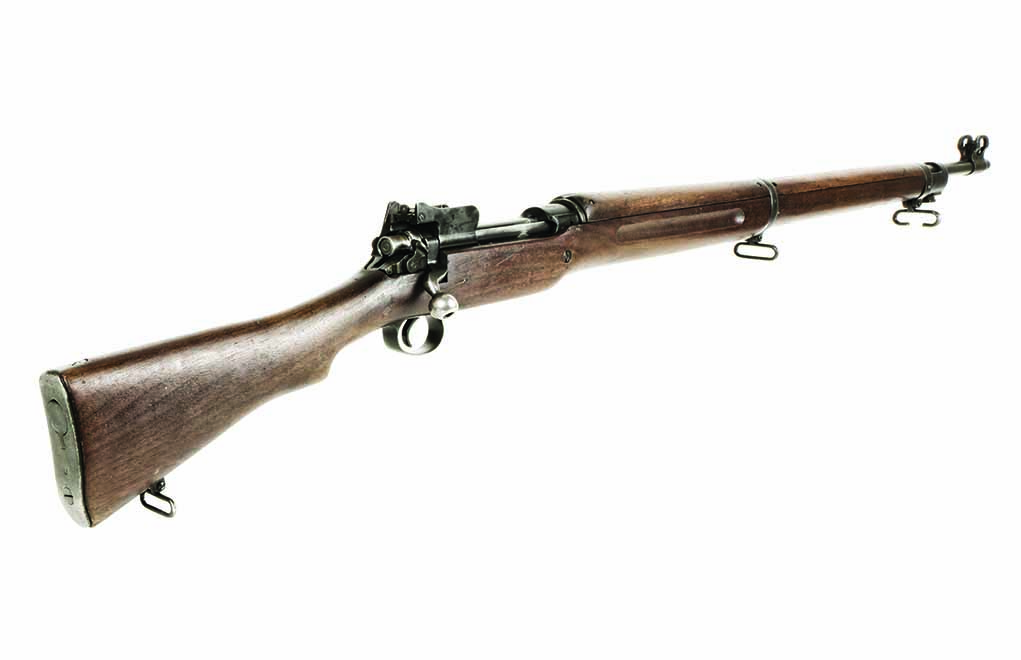
The M1917 Enfield, or the “American Enfield”, was used in larger numbers than the official U.S. service rifle of the Great War. Today, it still a sweet shooter.
How Did The Unique M1917 Make It Into U.S. Service:
- The rifle was issued and carried by more U.S. servicemen in WWI than the M1903 Springfield.
- It is an American modification, chambered .30-06 Springfield, of the Pattern 1914 Enfield.
- The rifles were used due to a lack of M1903 and Krag service rifles.
- They were made by Winchester Repeating Arms Co., Remington Arms Company and the Eddystone Rifle Plant.
Its official designation was the “U.S. Rifle, Caliber .30 M1917,” but it was also known as the “Enfield” or “P-17”—both of which are technically incorrect (although many attached those nicknames to it).
The term, “P-17,” was most likely coined by workers at Remington, Winchester and Eddystone, which were previously contracted to manufacture the P-14, Great Britain’s replacement for the Short Magazine Lee-Enfield (SMLE). To differentiate these two very similar guns, the P-17 name came into unofficial use. “Enfield” most likely surfaced because it rolled off a soldier’s tongue easier than M1917 and because the P-14 on which it was based was designed by the Royal Small Arms Factory at Enfield Lock in England.
No Love Lost
Regardless of what it was called, it was issued to, and carried by, more U.S. servicemen than the official U.S. military rifle—the M1903 Springfield—during that time period. And, many in the military didn’t like it much, preferring the Springfield.
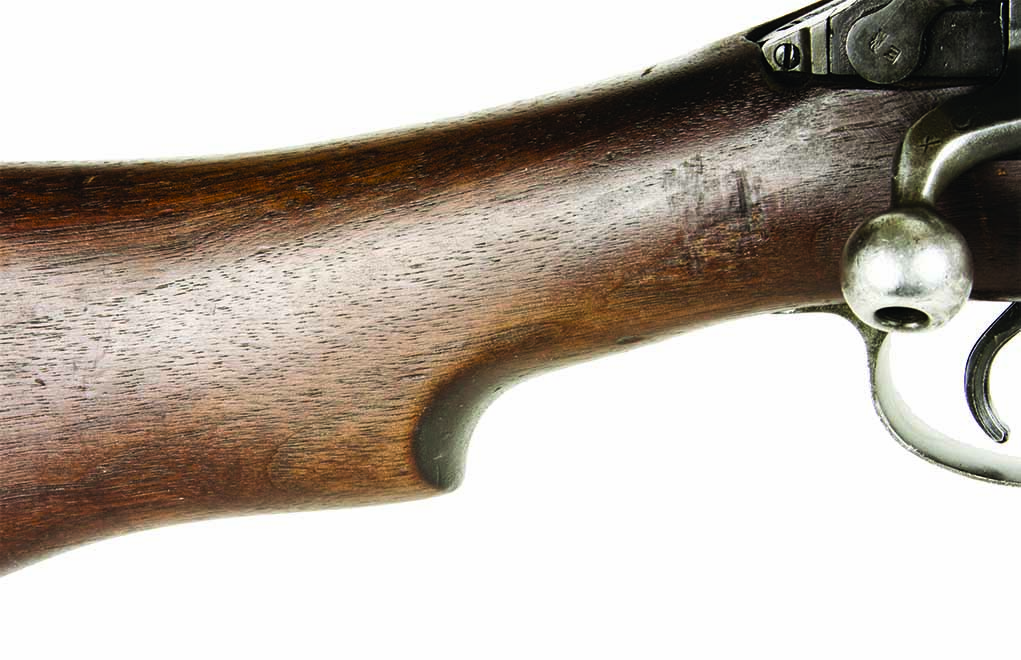
For one thing, the M1903 had a sleeker look. It also had a windage-adjustable rear sight, making it easier to zero (although some would argue that the M1917’s rear sight was tougher, as was the front sight; both were protected by robust wings, or ears, to prevent dings or damage by rough handling in combat conditions). In addition, it just didn’t seem right to many Americans that this foreign-designed rifle—which finished cocking upon closing the bolt, unlike that of the M1903 that cocked when the bolt handle was lifted to open it—be used by American forces.(Actually, the M1917’s dual-locking lug bolt’s striker partially cocked on opening the bolt. It then completed the cocking process when the bolt was closed.)
Nevertheless, even with all the criticism, the M1917 served well. It was also the tool that saved many U.S. soldiers’ lives and took the lives of many of the enemy. And, after use and experience with the gun, many doughboys stopped complaining.
M1917 Chain of Events
Originally, it was never intended for the British-designed rifle to be used by American forces, but circumstances resulted in the gun being used in far greater numbers than the M1903. Reports vary as to exact numbers, but it’s estimated that three out of four rifles used by American forces in Europe were M1917s.

The chain of events began when the British, in an effort to replace the SMLE as their main service rifle, began developing the Pattern 13 (P-13) rifle early in the 20th century and chambered it in a cartridge of .276 caliber—actually, .282 inch. But when the Great War started, Britain’s Select Committee decided to alter the P-13 to chamber the .303 British cartridge, which was Britain’s standard service round at the time.
Only about 1,250 P-13s in .276 caliber had been completed at the Royal Small Arms Factory Enfield, and the Brits had difficulty finding enough British capacity to produce the .303-caliber P-13, which had been designated the Pattern 14 rifle. The urgency of the war led them to contact American manufacturers in a search for manufacturing capacity. In the end, Winchester and Remington signed contracts to produce the .303-caliber P-14. It so happened that Remington Arms Company of Delaware had a plant operated by a sister company in Eddystone, Pennsylvania, and that plant also became engaged in producing P-14s.
More Military Guns:
- The M1903A4 Sniper Rifle: An Old Soldier Still Hits the Mark
- M1 Garand: America’s Original Battle Rifle
- 6 Long Guns To Know From The Spanish-American War
- Five Guns You Need To Know From The American Revolution
- 8 Long Guns You Have to Know from the American Civil War
Then, when the United States entered World War I, there weren’t enough M1903 Springfield or older U.S. Krag service rifles on hand to meet demand. In addition, M1903 production at Springfield and Rock Island arsenals wouldn’t be enough fill the shortage.

Finding new sources and building the tools to manufacture the M1903 would take too long, so the only viable alternative was to modify and use the British P-14 rifle chambered in .303 British, which was being manufactured by Winchester Repeating Arms Co. (New Haven, Connecticut), Remington Arms Company (Ilion, New York) and the Eddystone Rifle Plant, which was operated by a subsidiary of Remington—the Midvale Steel & Ordnance Co.—and was located in Eddystone, Pennsylvania.
With the three manufacturers just completing contracts with the British for the P-14, manufacturing capacity was immediately available, and only small modifications to the P-14 were needed to rechamber the rifle for the .30-06 U.S. service rifle cartridge. There was a slight delay, but that route was the best alternative to quickly produce enough rifles for America, given the circumstances.
Design Changes
Design changes to the P-14 to chamber it for the .30-06 included different barrels with chambers cut to accept the .30-06; a change in the bolt face; and minor alterations to the magazine well. The .303 British round had a bullet diameter of .311 inch, compared to the .30-06 diameter of .308 inch, and the .303 was a rimmed case, while the .30-06 was rimless.

There was some bad information circulating at the time that the P-14 could not handle the pressure generated by the higher-velocity .30-06 round, but that was incorrect. In fact, the receiver and bolt of the M1917 and the P-14 were made of nickel steel and were stronger than those of the M1903. And while the change from a rimmed to a rimless cartridge resulted in the magazine accepting six .30-06 rounds instead of five .303 rounds, there were complaints that the M1917 didn’t have a magazine cutoff like the P-14. This made inspection arms when drilling more difficult to execute and rapid dry-fire in practice impossible because the magazine follower would lock the bolt back.
Workarounds were developed for both shortcomings, so although the M1917 might not have been perfect, it still got the job done.
The American .30-06 charging clip that was used to load the M1903 and the M1917 held five rounds, and the M1917 magazine capacity was six, but in the heat of battle, a soldier would typically load one charging clip of five rounds. If there were time and a loose round were available, the last and sixth round could be loaded individually—if the soldier chose to do so.
To facilitate drill and rapid dry-fire, it was common to insert a coin into the magazine to hold the follower down so the bolt wouldn’t be held open when caught on the square back of the follower. (Experiments with a sample M1917 used for this review showed that a nickel seemed to work best, while a penny or dime failed to sufficiently depress the follower.)
Rebuilds and Refurbishing
Judging from its serial number and other markings, the M1917 specimen used for this article was produced by Remington at its Ilion, New York, factory, most likely in August 1918. Serial number records are not entirely accurate, so the manufacture date is not certain.
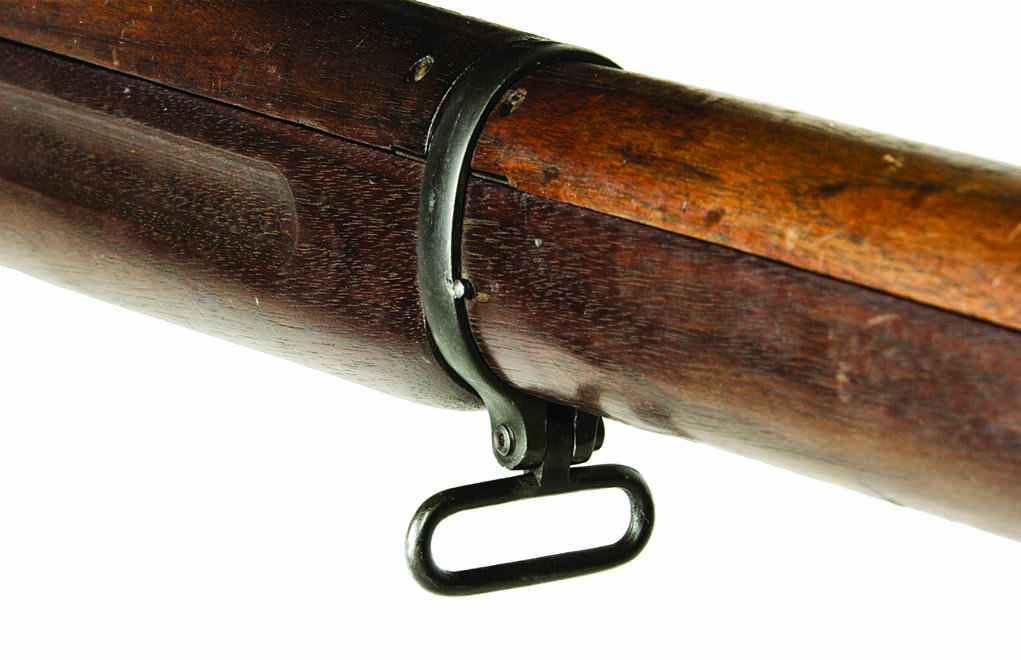
During the Great War, the federal government was paying about $26 for each gun, but prices for used guns have increased considerably since then. As with many M1917s available today, this one isn’t original, because it was rebuilt or refurbished at the San Antonio Armory, probably during World War II. Nevertheless, it’s in very good condition, retains most of its finish, has a bright bore with distinct lands and grooves, and the wood has a very nice patina. The one-piece, English-style stock with a semi-pistol grip (as is the case with all M1917 stocks) is made of black walnut that is oiled and has a hole with a spring-loaded door in the butt to store cleaning equipment.
As was common with World War II rebuilds, the barrel was replaced with one made by the High Standard Company. Johnson Arms also made replacement barrels. Frequently, and because parts were mostly interchangeable among manufacturers, parts were intermingled. Some on the sample M1917 are marked with an “E” to indicate they were made by Eddystone in Pennsylvania.
However, not all parts of all M1917s are interchangeable. M1917s manufactured early on by Winchester suffered from parts interchangeability problems, so Remington and Eddystone delayed production until standardized manufacturing drawings were completed and a 95 percent interchangeability level was achieved.
Zeroed? Not Necessarily
During the refurbishing process, it was not uncommon for guns to be released without being zeroed. But it isn’t particularly difficult to zero an M1917; it just takes a little time, because the front sight must be drifted to adjust for windage. Once done, it’s staked in place.
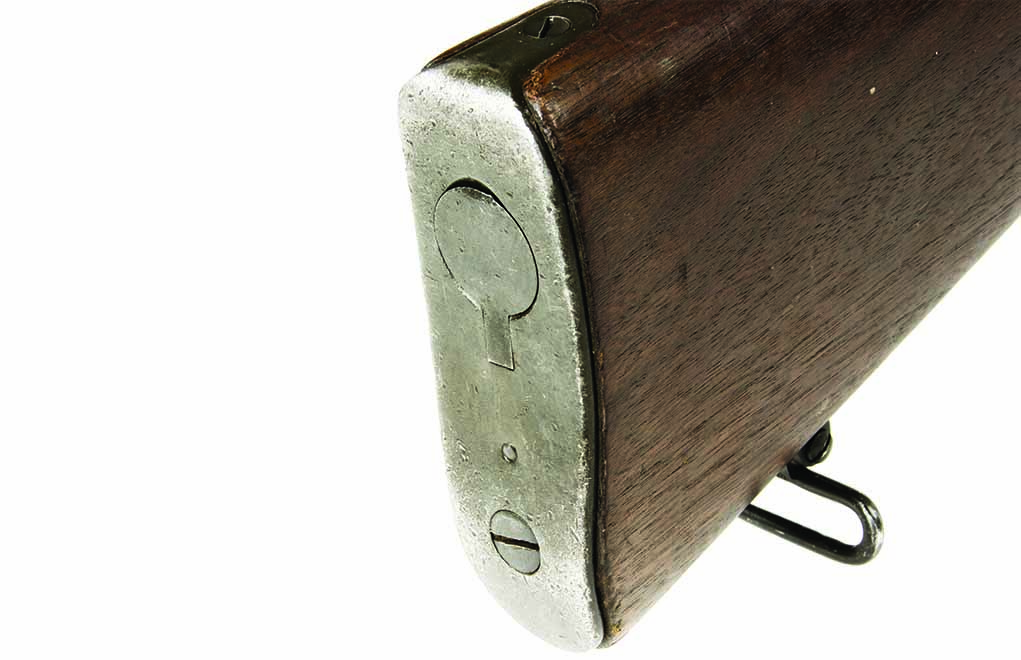
The rear sight on M1917s has two apertures: one fixed for a battle sight zero (BZO) of 300 or 400 yards (sources disagree on the BZO range) and the other mounted on a ladder-type, flip-up sight graduated for ranges of 200 to 1,600 yards. The apertures make for a very good sight picture—although for aging eyes, they’re not perfect. For that reason, I fired test groups off the bench at 50 yards, rather than 100 yards.
The gun proved to be pretty accurate with several different loads, and the average group size was about 1.5 inches. There were no malfunctions of any kind, thanks to some expert gunsmithing performed by Tyler Gun Works. However, due to a headspace problem, the barrel had to be moved back slightly and the chamber recut.
Originally, the metal on M1917s was blued, but during the World War II refurbishing process, many were Parkerized. It appears that the finish on the sample gun is blue. The reason M1917s were arsenal-overhauled during World War II was to arm some U.S. military units, especially those stationed in the States, as well as to arm some allies, including Great Britain. And, following World War II, the United States supplied M1917s to a number of friendly countries. After all, the M1917 had proven to be an efficient battle rifle.
M1917 or M1903?
It’s often debated whether Sergeant Alvin York of the U.S. Army used a M1917 or a M1903 rifle in Europe during the action for which he was awarded the Congressional Medal of Honor (MOH).
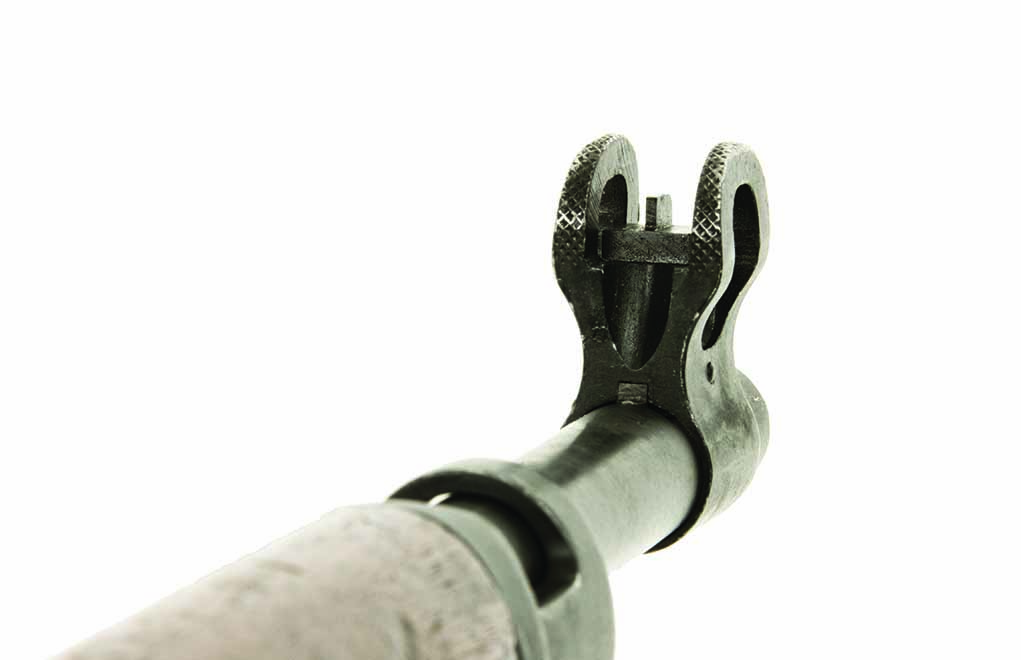
His personal diary clearly says that after arrival in France, his unit, the 82nd Infantry Division, turned in its M1903s and was issued M1917s. But during an interview with York’s son by Garry James, a well-known gun writer and firearms historian, James says he was told Sergeant York preferred the M1903 and therefore traded his M1917 for one that later was used in the encounter in France during which York captured many Germans and for which the MOH was bestowed upon him. That’s pretty convincing evidence, but the controversy and uncertainty persist to this day.
M1917 Availability
M1917s found their way into the civilian market when the U.S. government sold some as surplus. Many were sporterized, and some were rechambered for more-powerful cartridges to take advantage of the M1917’s strong action. Today, they’re available on the used market, although prices have risen as more shooters begin to appreciate the history of these old war-horse rifles.
The article originally appeared in the December 2019 issue of Gun Digest the Magazine.

Next Step: Get your FREE Printable Target Pack
Enhance your shooting precision with our 62 MOA Targets, perfect for rifles and handguns. Crafted in collaboration with Storm Tactical for accuracy and versatility.
Subscribe to the Gun Digest email newsletter and get your downloadable target pack sent straight to your inbox. Stay updated with the latest firearms info in the industry.

![Best Concealed Carry Guns In 2025 [Field Tested] Wilson Combat EDC X9S 1](https://gundigest.com/wp-content/uploads/Wilson-Combat-EDC-X9S-1-324x160.jpg)


![Best 9mm Carbine: Affordable PCCs [Tested] Ruger Carbine Shooting](https://gundigest.com/wp-content/uploads/Ruger-Carbine-Shooting-100x70.jpg)
![Best AR-15: Top Options Available Today [Field Tested] Harrington and Richardson PSA XM177E2 feature](https://gundigest.com/wp-content/uploads/Harrington-and-Richardson-PSA-XM177E2-feature-100x70.jpg)

great writing – But I believe / know that it is now
“Medal of Honor” not “Congressional Medal of Honor”.
Did it change after WW1 ?